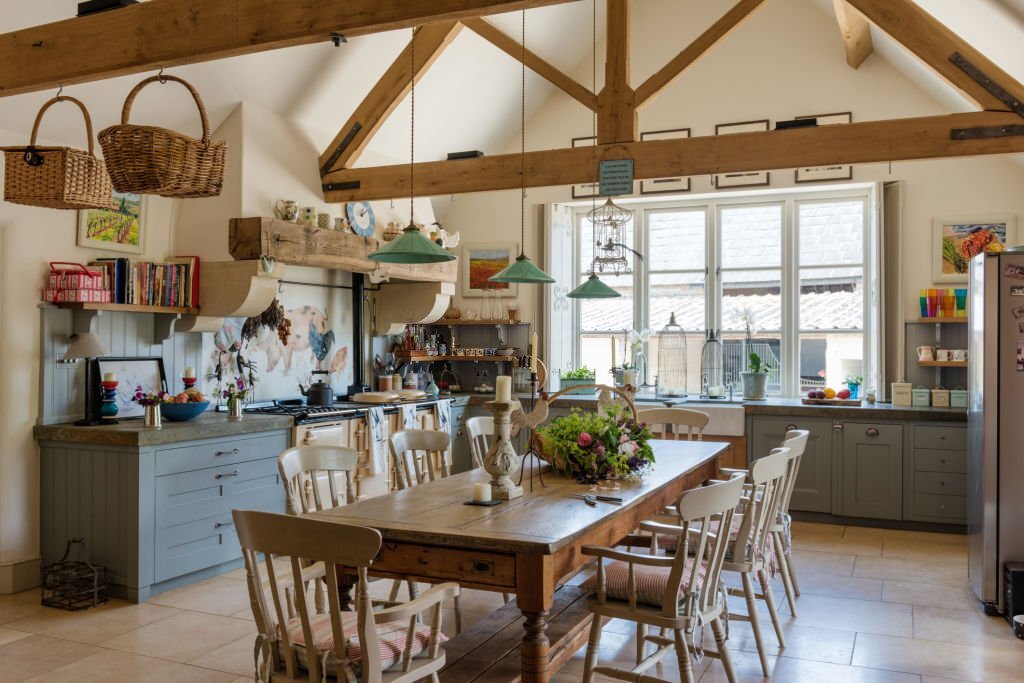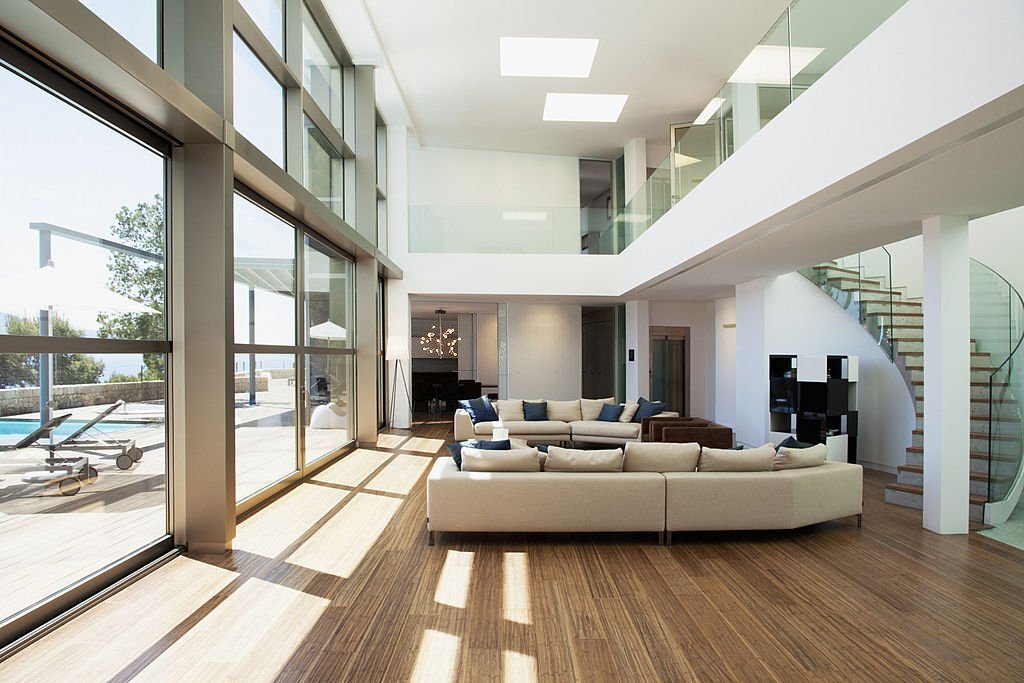• Introduction
• Rustic influences
• Maximizing functionality
• Embracing minimalism
• Merging indoor and outdoor living
• Cozy campfire feels
• Conclusion
Introduction
Camping is an art form that requires a certain amount of skill and knowledge to master. It’s about being in nature and learning to coexist with it in harmony. Who knew that the great outdoors could inspire something as domestic as home design? But, we’ll take inspiration from anywhere we can get it.
When it comes to design, camping and the outdoors may seem like an unlikely pairing, but they have so much in common. Both require purposeful planning, smart thinking, and an appreciation for the beauty of the natural world. Whether you’re camping in the mountains or designing a home in the city, these core principles apply.
The best part about camping? The sense of freedom and creativity that it inspires. It’s a prelude to inspiration, a chance to step out of your comfort zone and try something new. And who knows, the ideas you come up with while sitting around the campfire just might be the spark you need to create the perfect home design. So, let’s dive into the ways camping can inspire home design and get those creative juices flowing.

Rustic influences
Nature has undoubtedly been a source of inspiration for many designers, and home design is no exception. When it comes to camping and design, these two worlds may seem like an unlikely duo, but they can be more intertwined than one might expect. The beauty of the great outdoors, the cozy interiors of log cabins, and the rawness of earthy hues and textures can all be incorporated into a home design, creating a rustic yet modern feel.
Natural elements are a key aspect of both camping and rustic home design. The great outdoors offer a plethora of inspiration in the form of rocks, foliage, and wildlife. Designers incorporate this by bringing natural materials indoors with wooden floors and accents, stone countertops, and incorporating plants into the design. These elements not only create an aesthetic appeal, but they also offer a connection to the outdoors.
Log cabins are a staple of camping and often associated with rustic home design. The interior of log cabins can be warm and inviting, with wooden furniture and accents creating a cozy atmosphere. Designers take inspiration from this and incorporate logs into beams, columns, and wood paneling. The warmth of natural wood adds a sense of comfort and charm to a home.
Earthy hues and textures are also significant in both camping and rustic home design. Think of the rich greens and browns found in nature, which create a calming effect. Designers use earth tones in their designs, incorporating textured fabrics, such as wool and linen, to create a sense of coziness. Earthy hues can also serve as a background for bolder accent pieces, such as blankets or throw pillows, adding character to a space without overwhelming it.
Overall, camping can offer a great deal of inspiration when it comes to home design. From natural elements and log cabins to earthy tones and textures, there is no shortage of ways to incorporate the great outdoors into a home’s interior. In the end, rustic home design can offer a sense of calm, comfort, and charm that is hard to match.
Maximizing functionality
When it comes to camping, space is often at a premium. You have to pack everything you need into a limited amount of room, which means maximizing functionality is key. This is a lesson that can easily be applied to home design.
One of the most important things to master is the art of space management. Small rooms can quickly become cluttered and overwhelming, but with some clever rearranging, you can open up the space and make it feel much larger.
Multipurpose furniture is another great way to make the most of your space. A sofa that converts into a bed, a coffee table with hidden storage, and a folding dining table are all excellent examples of furniture that pulls double duty.
Efficient storage solutions are also a must. Whether it’s using vertical storage on the walls or investing in a few good storage containers, finding ways to keep your belongings organized and out of the way will help you make the most of your space.
By taking inspiration from camping and focusing on maximizing functionality, you can transform your home into a space that is both beautiful and practical.

Embracing minimalism
When it comes to adopting the camping-inspired design, minimalism shouldn’t be overlooked. It’s all about prioritizing purposeful design and decluttering for peace. In a world where we tend to accumulate stuff without aim, minimalism helps us calm the chaos.
Simplicity is key- let’s begin with clean and streamlined aesthetics that create calm. Excess fades and only what is needed remains. Clean lines and sharp edges contribute to striking features that create a sense of space and serenity.
Purposeful design is about having a reason for every piece in your space. Design may seem frivolous to some, but purposeful design can give your life more meaning. Vases filled with seasonal flowers, favorite books on a shelf, and treasures found on your trips can be the small details that matter.
Decluttering for peace means bids farewell to the things that no longer serve us. It may not be easy to part with things we’ve held tight for so long, but this process can lead to great peace. Do away with what doesn’t bring you joy or serve a purpose, so you can focus on the good things in life.
And let’s not forget about sustainable living. Minimalism encourages us to be conscious of our choices and make eco-friendly options when designing our homes. Sustainable materials and easily renewable resources should be at the top of your list.
Incorporating minimalism into home design can result in an alluring and calming space that is sure to inspire. Of course, it’s easier said than done, but with a few baby steps, you’ll be amazed at the outcome. Trust us!
Merging indoor and outdoor living
Who says you can’t enjoy the great outdoors while being comfy inside your own home? With a little imagination and inspiration from camping, you can bring the outside in and seamlessly merge indoor and outdoor living. The trick is to create a transition that’s as smooth as butter. Use large windows, sliding doors and pocket doors to maintain the illusion of being surrounded by nature. Letting natural light and fresh air in not only keeps the atmosphere fresh but also reduces the energy bills.
Why stop there when you can double up on the elements? Adding natural hues, textures, and materials to indoor spaces creates a sense of cohesion with the outdoor world and brings in a sense of warmth and harmony. Imagine taking a leisurely stroll through the forest and feeling a sense of calm and tranquillity. Now consider bringing those same feelings into your living space with indoor plants, natural wood accents, stones and other earthy-textured elements.
Lastly, to ensure that you’re connecting with the outdoors, consider bringing in a few outdoor furnishings indoor. Rattan chairs or hammocks, lightweight and durable furniture pieces can create an inviting and relaxed vibe indoor. Outdoor rugs or even indoor-outdoor carpets bring in a variety of patterns and designs that blend with the indoor colour palette and keep the eyes engaged. So when you’re looking to create a little space to unwind, consider bringing the outside in.
Cozy campfire feels
When it comes to camping, few things beat the cozy warmth of a good campfire. And this is something you can definitely incorporate into your home design. Think warm hues, soft lighting, and comfy furnishings. To start, lighting is key. You can create a cozy, campfire-like ambiance by using warm, low lighting throughout your space. This can be achieved through a combination of lamps, candles, and string lights. The goal is to create a soft, relaxing glow that makes you feel like you’re sitting by the fire. Next, textiles and furnishings can help to create that comfy, campfire feel. Think soft blankets, plush cushions, and cozy rugs. These items not only add to the warm, inviting atmosphere but can also serve practical purposes like adding insulation and absorbing noise. Overall, a cozy campfire-inspired space is all about creating a warm, welcoming environment that makes you want to curl up and relax. So why not bring a little bit of the outdoors in and incorporate these elements into your home design?
Conclusion
Inspiration can be found in the most unexpected places. By bridging the gap between camping and home design, we can create harmonious spaces that embrace the beauty of nature. From rustic influences to cozy campfire feels, the possibilities are endless. Let’s explore the great outdoors and let it inspire our living spaces.



